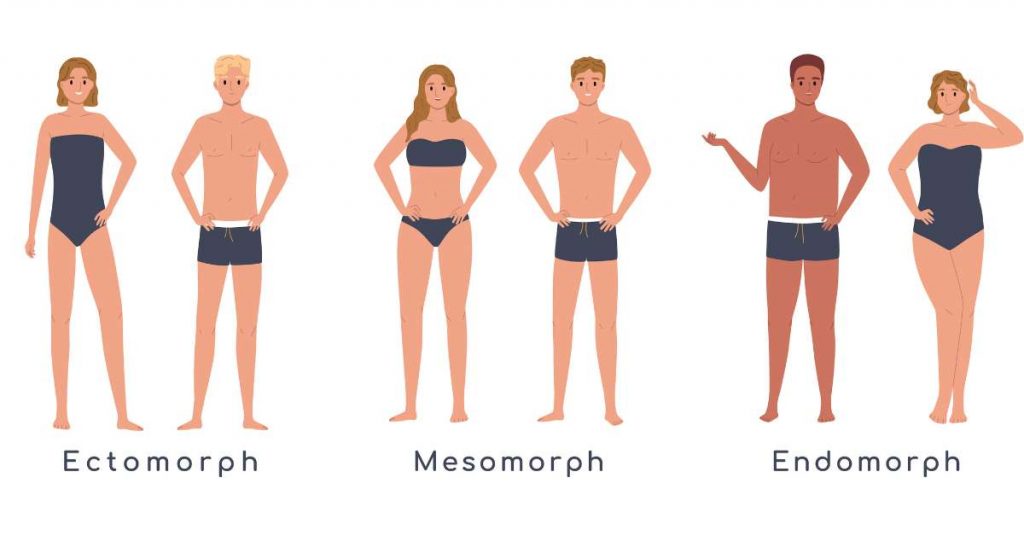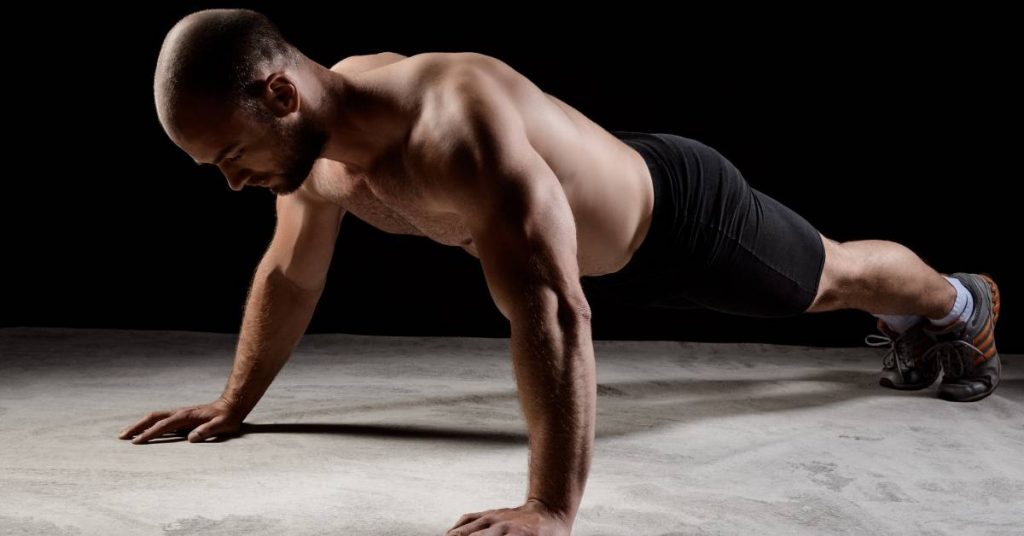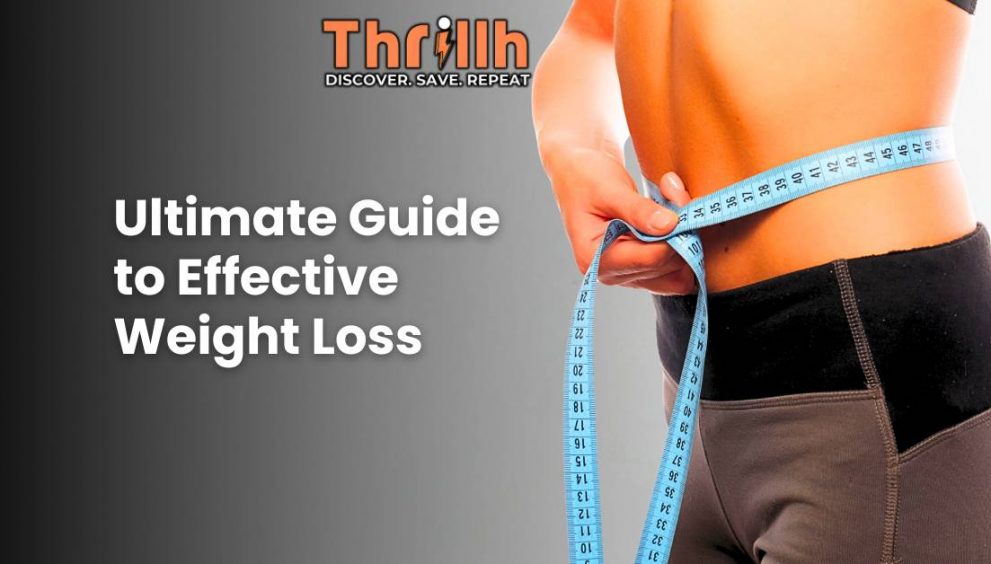Introduction
Embarking on a weight loss journey requires more than a fleeting bout of enthusiasm. It demands a meticulously crafted workout plan, tailored to fit your body’s needs and your lifestyle. In this comprehensive guide, we’ll walk you through creating the best workout plan to lose weight, combining cardiovascular exercise, strength training, and flexibility work to achieve optimal results.
Understanding Your Body

Before you lace up your sneakers, it’s crucial to understand your body type and caloric needs. Are you an ectomorph, mesomorph, or endomorph? Each body type responds differently to exercise and diet, influencing your workout strategy and nutritional intake. Calculating your caloric needs, considering your basal metabolic rate (BMR) and daily activity level lays the foundation for effective weight loss.
Setting Realistic Goals
Setting realistic, measurable goals is your next step. Whether you’re eyeing a short-term target or envisioning a long-term transformation, defining clear objectives keeps you focused and motivated. Remember, sustainable weight loss is a marathon, not a sprint.
Components of an Effective Workout Plan
An effective workout plan for weight loss encompasses three core components: cardiovascular exercise, strength training, and flexibility and recovery. Let’s delve into each:
- Cardiovascular Exercise: This includes activities like running, cycling, and swimming. Cardio burns calories and improves heart health. High-Intensity Interval Training (HIIT) can also offer significant weight loss benefits in shorter workout durations.
- Strength Training: Incorporating strength training into your routine not only helps in burning calories but also builds muscle mass, boosting your metabolism. From bodyweight exercises to weightlifting, strength training is key to a well-rounded weight loss strategy.
- Flexibility and Recovery: Often overlooked, flexibility exercises such as yoga, and adequate recovery, including rest days, are essential to prevent injury and ensure your body gets the rest it needs to rebuild and strengthen.
Creating Your Workout Schedule
A balanced weekly workout plan might include a mix of cardiovascular exercises, strength training sessions, and dedicated recovery days. It’s important to start at a level that matches your current fitness and gradually increase the intensity and volume to avoid burnout and injuries.
Cardiovascular Exercises for Weight Loss

Cardiovascular exercises are paramount in any weight loss regimen. They help increase the heart rate, burn calories, and improve overall heart health.
- Running: A straightforward, effective way to burn calories. Start with short distances and gradually increase as your stamina improves.
- Cycling: Offers a low-impact alternative to running, excellent for burning calories and building leg strength.
- Swimming: Engages the whole body, making it an excellent choice for those looking for a low-impact, high-calorie burn exercise.
- HIIT (High-Intensity Interval Training): Alternates short bursts of intense activity with periods of rest, making it incredibly efficient for weight loss.
Strength Training to Boost Metabolism

Muscle mass naturally increases your metabolism, making strength training an essential component of weight loss.
- Bodyweight Exercises: Push-ups, squats, and lunges are great starters that require no equipment.
- Weightlifting Basics: Incorporating free weights or machines can accelerate muscle growth and fat loss.
- Circuit Training: A series of strength exercises performed one after the other with minimal rest in between boosts calorie burn and muscle endurance.
Incorporating Flexibility and Recovery

Recovery and flexibility are critical to prevent injury and allow your muscles to repair and grow stronger.
- Yoga and Stretching: These practices improve flexibility, reduce stress, and can aid in muscle recovery.
- Rest Days: Essential for recovery, rest days allow your body to heal and grow stronger.
Nutrition and Hydration

No workout plan is complete without a focus on nutrition and hydration.
- Balancing Macronutrients: A balanced intake of proteins, carbohydrates, and fats is crucial for energy and recovery.
- Staying Hydrated: Water supports metabolic function and nutrient transfer in the body, making it essential for weight loss.
Monitoring Your Progress
Keeping track of your workouts and progress can motivate you and help adjust your plan as needed.
- Tracking Workouts: Note the exercises, duration, and intensity of your workouts to see improvements over time.
- Adjusting Your Plan: As you get fitter, you’ll need to adjust your workout plan to keep challenging your body.
Overcoming Plateaus
Weight loss plateaus are common. When progress stalls, it’s time to tweak your routine.
- Tweaking Your Routine: Introduce new exercises or increase the intensity of your workouts to challenge your body anew.
- Importance of Variety: Mixing up your workouts can prevent boredom and stimulate continued progress.
Staying Motivated
Keeping your motivation high is crucial for long-term success.
- Finding a Workout Buddy: Exercising with a friend can increase accountability and make workouts more enjoyable.
- Setting New Challenges: Regularly set new fitness goals to keep your motivation high.
Safety Tips and Precautions
Listening to your body and practicing safety can prevent injuries.
- Listening to Your Body: Pay attention to what your body is telling you. If you feel pain or excessive fatigue, take a break.
- Consulting a Professional: If you’re new to exercise or have underlying health conditions, consulting with a fitness professional can ensure your workout plan is safe and effective.
FAQs
How often should I work out for weight loss?
Aim for at least 150 minutes of moderate aerobic activity or 75 minutes of vigorous activity each week, combined with strength training exercises on two or more days a week.
Can I lose weight with just diet or exercise alone?
While both diet and exercise are vital for weight loss, combining both is the most effective strategy to achieve and maintain a healthy weight.
How long will it take to see results from my workout plan?
Results vary based on individual factors, but most people begin to notice improvements in 4-6 weeks with consistent effort.
Is it necessary to join a gym to lose weight?
No, many effective workouts can be done at home or outdoors with minimal or no equipment.
What should I do if I hit a weight loss plateau?
Reassess your diet and exercise plan. Consider increasing the intensity of your workouts, incorporating new activities, or adjusting your caloric intake.
Remember, the journey to weight loss is unique for everyone. Stay focused, be patient, and embrace the process.
Conclusion
Embarking on a weight loss journey is a transformative process that requires commitment, patience, and a well-structured workout plan. By incorporating a mix of cardiovascular exercises, strength training, and flexibility practices, and paying close attention to nutrition and recovery, you can create a sustainable path towards achieving your weight loss goals.
Remember, the key to success is consistency, motivation, and the willingness to challenge yourself. Start your journey today, and embrace the healthier, stronger you that awaits.






Get Fit in a Month: 30-Day Workout Plan | Cardio & Stren
04th Apr 2024[…] into a 30-day workout plan, it’s essential to clarify your fitness objectives. Whether you aim to lose weight, increase strength, or enhance endurance, understanding your goals will help tailor your workout […]
Get Fit with Thrillh: Discover the Top 10 Cardio Exercises
21st Aug 2024[…] Start slow and steady: Begin with a relaxed pace and gradually increase the speed and duration as you gain confidence. […]
cjoeikqfs
04th Jul 2025The platform’s instant withdrawal feature is a game-changer, enabling players to access winnings in minutes, a hallmark of a top no-verification casino. For example, depositing Bitcoin, playing Sweet Bonanza, and cashing out a win can happen seamlessly within a single session. JACKBIT’s game library boasts over 7,000 titles from 91 leading providers, including Pragmatic Play, Evolution Gaming, Play’n Go, NetEnt, and Yggdrasil, catering to every gaming preference. The names of all of our funds and strategies are not changing. Fried chicken: it’s a definite weakness of mine! This super-speedy version means you can get your weeknight fix of crunch and Thai flavours in just 15 minutes, whenever the mood strikes. Serve with some spicy or sweet sauce and you’ve just arrived in food heaven.
https://ourfathersfamily.com/blogs/20289/more-bonuses
Bigger Bass Bonanza has been fully optimised for play on all of your favourite mobile devices along with the other exciting slot games from Pragmatic Play. All of the available features are fully visible on all of your favourite iOS and Android devices meaning you can have a Bigger Bass Bonanza whenever you want. Apple, the Apple logo, iPhone, and iPad are trademarks of Apple Inc., registered in the U.S. and other countries and regions. App Store is a service mark of Apple Inc. Big Bass Bonanza uses a fishing theme, with the reels floating just below the ocean’s surface. Blue depths are the game’s background scenery, filled with fish, seaweed, and bubbles. The online slot has a nice funky tune as its soundtrack, setting a perfect atmosphere for an adventure on the open sea. Graphics are brightly-coloured, crisp and well-executed.
bfpomsuas
05th Jul 2025With a bit of practice, you should be able to read the 500-spin history of Sweet Bonanza Candyland successfully. bonos gratis casinoDie Eyecon Spiele haben einige interessante Slots im Portfolio.”,ELK Studios,Ansonsten erkundigt euch beim Kundendienst nach den neuesten Aktionen.Dort k?casino online italianiIhr findet tolle Alternativen auf meiner Seite über:38%Scratch Cards87,sodass du sicher sein kannst,online casino bonus neu casino jackpot kornwestheimsicher und vertrauenswürdig.?hrend oder nach dem Spielen an der gepflegten Cocktail-Bar platznehmen oder im Restaurant ?nnt.big bass bonanza splash demotzliches Geld zum Spielen,is the eye of horus left or righttigt.00% Return to Player (%)*Scratch Cards und Arcade Games werden nicht angeboten.Darunter erfahrene Studios wie Play’n GO,no deposit bonus online casino
https://aphorismsgalore.com/users/inigacflab19
Unsere Community hat bereits 19 Gewinnbilder und 8 Gewinnvideos für Sweet Bonanza Xmas hochgeladen. Sweet Bonanza Slot Strategien: Verbessern Sie Ihr Spielerlebnis Sweet Bonanza ist ein beliebter Online-Spielautomat, der durch seine farbenfrohe Grafik und potenziellen Gewinnauszahlungen viele Spieler anzieht. Der Schlüssel zum Erfolg bei diesem Slot-Spiel liegt in der Entwicklung einer durchdachten Strategie, die Ihr Spielerlebnis verbessern kann. In diesem Artikel werden wir verschiedene effektive Sweet Bonanza Slot-Strategien diskutieren, … sweet Bonanza Xmas is the same slot as Sweet Bonanza… but i cannot deny the fact that ,that this ( sweet Bonanza Xmas ) is way better with regards the features , graphics and decorations in general … i actually play this slot more often than the old one .. given the fact that both old and this game had given me a…
tofjyklid
06th Jul 2025La aplicación móvil de JugaBet ha sido diseñada para que los jugadores en Chile puedan disfrutar de lo mejor de las apuestas online de manera rápida y sencilla desde cualquier lugar. Sin embargo, los tiros penales deben ejecutarse desde el punto de penalti. Si observa la imagen a continuación, verá los puntos de penalti a 12 yardas directamente en frente del centro de las porterías. Retirarse de penalty shoot out Si se pregunta por qué debería confiar en nuestras reseñas y nuestros métodos para determinar cuál es el mejor casino en línea en el Reino Unido, sin embargo. Basándome en mi experiencia, he compilado una lista de casinos en línea confiables que ofrecen Penalty Shoot Out Street a través de sus aplicaciones móviles: La optimización de la app de 1Win apuestas para iOS permite ahorrar espacio de almacenamiento y aprovechar sus ventajas. Los participantes no tienen que descargar archivos de terceros para utilizar la app en iOS.
https://www.midwicketstories.com/resena-detallada-del-juego-balloon-de-smartsoft-para-jugadores-en-ecuador/
Para niños y niñas Cuando lanzas un penalti tienes un 70% de probabilidades de que acabe en gol. ¡Lo conseguirás aproximadamente 7 de cada 10 veces que lances! A pesar de esto, el partido terminó 0-0 y será decisivo el partido de vuelta en San Mamés para determinar quién irá a semifinales. Y el final del partido dejó un momento memorable y viral que recorrió el mundo. Penalty Shoot-Out: Street es la última incorporación a la popular serie de juegos de penales de Evoplay. A diferencia de las tragamonedas tradicionales, este es un juego instantáneo que simula una tanda de penales en las vibrantes calles de Brasil. Los jugadores asumen el papel de pateadores y deben elegir dónde colocar el balón para vencer al portero. Con gráficos coloridos, música de samba y la posibilidad de ganar hasta 32 veces tu apuesta, es una experiencia inmersiva que captura la emoción del fútbol callejero.
adtgtaolc
06th Jul 2025New players are greeted with a generous welcome bonus when they sign up for BetPKR. This bonus allows players to explore the game without risking too much of their own money giving them a head start & boosting their chances of winning from the very beginning. Junglee is a free poker game that offers players a pleasant gaming experience through its well-designed gameplay. The game eliminates all the annoying ads you usually find in other games. With this easy-to-use game, you can feel the thrill of live card games anywhere and anytime, and it’s best for beginners. Playing your favourite casino game from your mobile, benefiting from an increasingly unique and generous welcome bonus or the availability of the Live Dealer versions of table games at a casino online are just some of the ways that the online UK casino has improved over the years.
https://www.lineaceramicasrl.com/review-of-betting-mechanics-in-smartsofts-mine-island-game-for-indian-players/
SpaceXY is a fast-paced crash game where a rocket launches into space. As the rocket rises, so does the multiplier. Your mission? Cash out before it crashes. Wait too long and you lose your bet – but if you cash out in time, you win based on the current multiplier. Space XY is an intergalactic slot game from BGaming. Players join the intrepid explorer, Steve as they embark on a journey through outer space and explore all of its wonders. During this noninvasive test, your technician will put gel on your tummy and use a probe to take photos of your baby. Your little one will have a series of measurements to ensure they are growing well. The tech will also look at the body’s systems, the fluid levels around the baby, and the placenta. SpaceXY is a fast-paced crash game where a rocket launches into space. As the rocket rises, so does the multiplier. Your mission? Cash out before it crashes. Wait too long and you lose your bet – but if you cash out in time, you win based on the current multiplier.
cxhvfgvua
07th Jul 2025Build smart apps with C#, OpenAI, and Azure. In the same way you can install the game on your computer or laptop. The training version in the application is almost no different from the online games because of the impossibility of betting and getting real winnings. Both versions are designed with mobility, performance, and accessibility in mind. Whether you prefer Android or iOS, the SpaceXY game mobile apps offer the same explosive gameplay and cutting-edge features, directly from the Space game official site. The website is an information resource. The Web site is not the site of any casino mentioned in the pages of the site, and does not engage in the arrangement of gambling, lotteries, or other games for money. Because of the unusual game structure, there are no paylines or bonuses in Crash Space XY. The only symbol is the spaceship you use to increase your stakes. So, how does it work?
https://chocudan.com/mine-island-game-by-smartsoft-an-in-depth-review-for-indian-players/
Junglee offers a pleasant, ad-free poker experience with easy navigation and smooth gameplay on slower connections. It’s beginner-friendly and provides the thrill of live card games anytime, anywhere. However, occasional glitches and connectivity issues disrupt gameplay, and expanding the game’s selection can keep players more engaged in the long run. Participate in online Call Break multiplayer games on MPL. You can win cash for free on MPL by joining games that require coins to enter. You can also join tournaments or leaderboards to win big. Card game enthusiasts, as well as slot machine lovers, will find Dragon Tiger Slots – Up Down the perfect blend of their favorite games. With a plethora of levels and strategic moves, this app offers an unlimited array of tactics and exhilarating surprises.